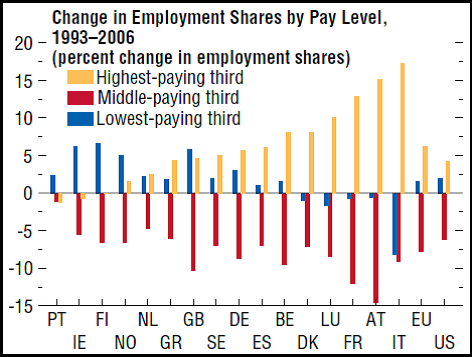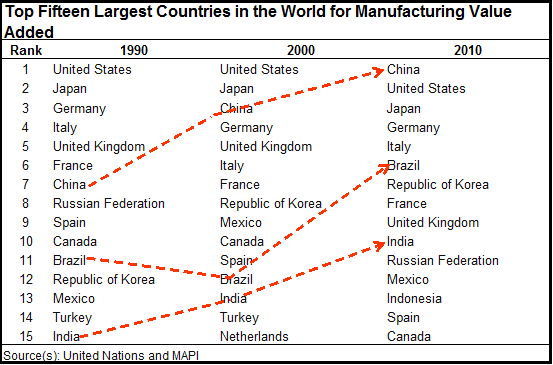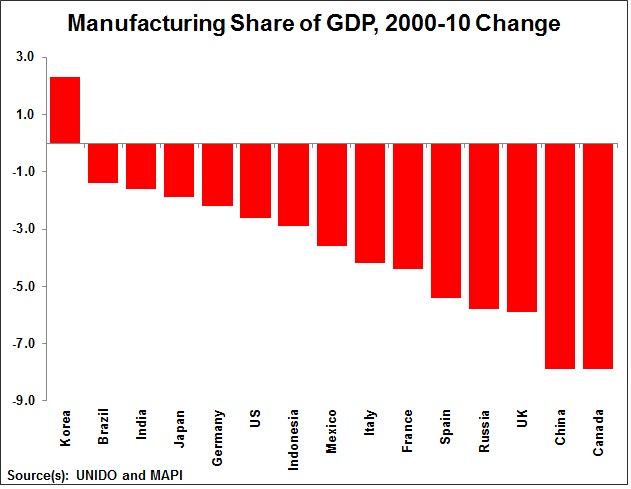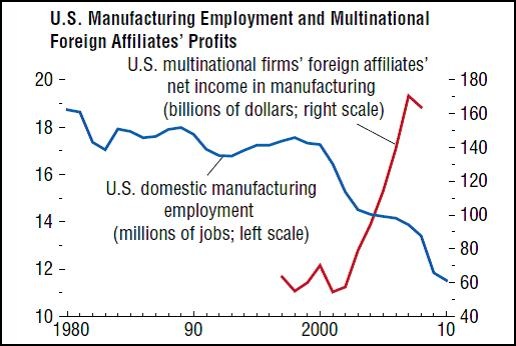Monday, January 23, 2012
Manufacturing: Hope or Hopeless?
Recent headlines suggest the ‘Made in the USA’ label is back in business. “Manufacturing employment has grown faster in the US than in any other leading developed economy since the start of the recovery,” says the FT. Indicators of the manufacturing sector also point to an optimistic outlook, according to January’s Business Outlook Survey of Philadelphia Fed.
The manufacturing outlook seems good in the rest of the world too with the exception of Europe. World industrial production will grow 5% next year, compared to 4.5% in 2011, according to Dan Meckstroth (Chief Economist of Manufacturers Alliance for Productivity and Innovation—MAPI).
But, beneath the surface things seem less hopeful, particularly in the advanced economies. For more than a decade, there has been a “hollowing out” of jobs in these economies — a striking loss of middle-income and manufacturing jobs – as summarized in a research piece I coauthored. The chart below shows a striking decline in middle-income jobs in advanced economies between 1993 and 2006.
This trend has continued over the past few years. “During the recession and recovery … highly skilled workers have done best, low-skill workers have done poorly, and those in middle-skill employment have done very, very poorly,” according to a recent article in The Economist. “Even as the job market has improved over the past year … employment among workers without a high-school degree rose by 126,000. Employment for workers with a college degree rose by just over 1m jobs. For those with just a high-school diploma, however, employment fell by 551,000.”
Advanced economies are also losing market share in manufacturing to emerging economies.
And in both advanced and emerging economies, manufacturing share’s of GDP is declining.
My research notes that the decline in manufacturing jobs accelerated during the 2000s and was accompanied by a huge increase in advanced economies’ imports from low-income countries. Other authors estimate that at least one-third of the aggregate decline in U.S. manufacturing employment during 1990–2007 can be attributed to increased imports from emerging markets. The chart below shows the sharp decline in U.S. manufacturing jobs and the increase in the profits of multinational firms during the 2000s. Meckstroth also points out that non financial corporate profits are nearly back to their peak, in particular, income for foreign affiliates which are extremely profitable.
Posted by at 10:09 PM
Labels: Forecasting Forum
Subscribe to: Posts



